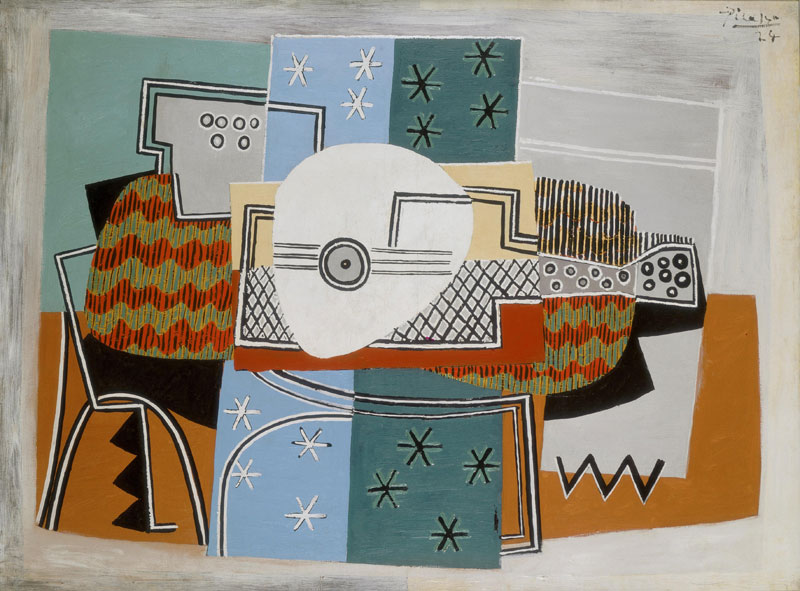Not another Picasso, I hear you cry! But this is a good one, where art history tells a story. Good old Pablo is always good value thanks to his constantly evolving style and experiments,. The premise for Picasso and Modern British Art at Tate Britain shows the wide-reaching influence of the artist on our own art movement. Many of our own greats were inspired by him, and these artists did not copy, they took what they saw and flew with it, creating their own, unique work in turn.
This story has two strands. Firstly, a look at some of the works of Picasso that were shown and collected in Britain from before the First World War to the tour of the painter’s political masterpiece Guernica after the Second World War. Secondly, we have the response of seven artists — Duncan Grant, Wyndham Lewis, Ben Nicholson, Henry Moore, Francis Bacon, Graham Sutherland and David Hockney – to his work.
Each homed in on Picasso’s major themes – the distortion of the female body (Moore), and the use of musical instruments to represent the human form (Nicholson). Picasso came to London in 1919 and worked on the Ballets Russes and many of the designs for The Three-Cornered Hat are collected here.
The works brought by British collectors are shown in one room in chronological order – this is successful because it shows how the early works are relatively accessible – we have those collected in the wake of the ebbing Impressionist movement – The Flower Seller bought by Glaswegian Shipping magnate William McInnes, and Boy with a Dove which heralded the start of the Blue Period. There is the complex Man with a Clarinet and the divine Nude Woman in a Red Armchair. A visit can then become a game of exploration – having picked up some key themes from this room the visitor can seek out the subsequent echoes in newer works.
Hockney’s admiration is undeniable – he paid tribute to the artist with two prints following his death, including The Artist and The Model. The link becomes more tangible through Hockey’s commission from the Metropolitan Opera in New York that included a design for Parade, based on Picasso’s work in 1917.
And finally crtics were not always so kind – GK Chesterton described his 1909 Cubist experiment Portrait of Clovis Sagot as ‘a piece of paper on which Mr Picasso has had the misfortune to upset ink and tried to dry it with his boots’. Plus ca change, and all that.
Picasso and Modern British Art runs at Tate Britain until July 15th. You can book online at www.tate.org.uk



